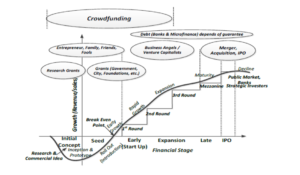- Introduction
The spread of working from home (home office) in the light of the pandemic has led to particular attention being paid to the development of legislation and judicial practice related to home office. There are two main directions in the Hungarian legal literature regarding the treatment of home office under Hungarian labour law: one approach is that the rules of the Act I of 2012 on the Hungarian Labour Code on teleworking provide adequate guidance as to the rights and obligations of the parties in practice, while the other approach is that home office is widely used in practice even outside the cases of telework (and under different conditions), and that there is greater uncertainty in legal issues concerning precisely those cases outside of the scope of telework. Real company practices show the validity of the approach that the rules on telework do not cover all cases of home office.
The focus on the legal problems of the home office has been highlighted as well in recent weeks by a highly publicised social security case in Germany. The key issue in the case was the extent to which an accident in home office could be considered as an accident at work (according to Hungarian terminology). In the case of home office, the distinction between journeys on duty, journeys relevant in the context of an accident in commute and journeys outside the scope of accident insurance can become quite complicated, which may have significant consequences on the entitlement to benefits under accident insurance. In addition, it may also raise a question as to what the consequences of the approach taken in this case, if followed in Hungary, might be in terms of occupational safety.
- The famous German case
In 2018, a case received considerable press coverage in which an employee working from home office suffered a fracture of the thoracic vertebrae, when he fell down the spiral staircase leading to the third floor of his home, where his workroom was located, immediately after he set off to begin his work from the bathroom on the fourth floor. The employee requested from the social security body to recognize his accident as an accident at work, but the latter refused to do so.
In the subsequent proceedings, the court of first instance emphasized that, in determining whether it was a journey on duty, the most important factor was whether the employee’s activity at the time of the accident were directed towards performing activity for the benefit of his employer and, in this respect, upheld the employee’s claim. The court of appeal, however, concluded that the fact that the employee goes down the stairs from the fourth floor to the third floor of his own apartment cannot be considered as a journey which falls within the scope of an accident in commute. Based on the jurisprudence and legal literature, the court of appeal held that a person employed in home office is never on a journey to and from the place of the insured activity within the house or apartment, the starting point of such a journey is the front door of the building through which the insured person’s home is situated and through which he must pass through in order to be considered an accident in commute. In addition, the court of appeal also found that the journey in question did not constitute a journey on duty. The journey on duty takes place during the performance of the insured activity and as such is part of the insured activity; however, in the present case, at the time of the fall, the employee was on his way to his workplace for the purpose of starting his insured activity, i.e. before he started it. For these reasons, the court of appeal reversed the judgment of the court of first instance and dismissed the claim.
However, the Federal Social Court (Bundessozialgericht, BSG), which ruled on the application for review, confirmed – in agreement with the court of first instance – that, exceptionally, a journey on duty can be established even if the place of residence and the place of work are in the same building. The BSG found that the employee had only taken the stairs in his house to start his daily work in home office and therefore, as a journey on duty, the employee was then performing an activity in the employer’s interest. Therefore, an accident suffered by the employee is considered as an accident at work under the accident insurance rules.
- The aftermath of the German social security cases concerning home office
Although the content of the BSG’s judgment is only available up to the extent of the press release[1],the report on the hearing scheduled for the judgment[2] and the first instance judgment is only available from the judgment of the court of appeal, it seems to be clear that the presented German case examined only the social security aspect of the accident. The case did not raise any obligation for the employer to compensate the social security body, nor did it raise any problems of occupational safety or any issue of liability under labour law. This in itself does not mean, of course, that the classification of an accident in the light of social security rules might not entail risks for the employer in a given case.
However, the judgement of the BSG is not without precedent. In a previous case concerning an accident, which occurred during home office, the BSG ruled that a journey begun for the purpose of carrying out an insured activity and forming part of the insured activity is a journey on duty and therefore must be considered the same as work at the business premises. The difference between journeys relevant in the context of an accident in commute and a journey on duty is that the latter is made directly in the interests of the undertaking. The BSG has also confirmed that the rules on journeys on duty should also be applied accordingly for journeys from the area of personal life to the place of work in the same house. However, in the case of working from home, only those premises are considered to be workplaces where a workplace is permanently established within the building on the basis of an individual employment contract and where the employees are regularly engaged in work activities.
As a result of the recent decision, a journey to reach the workroom within the home is considered a journey on duty not only if the employee has already started his daily work before the journey, but also if it is essential for starting the daily work.
In the summer of 2021, the German legislator supplemented the legislation on accident insurance under social security by rules relevant in terms of home office: under the newly introduced rules, if the insured activity is carried out in the home of the insured person or elsewhere, the accident insurance covers in the same extent as for activities carried out in business premises. The statement of reasons points out that accident insurance covers the journey on duty (for example, the way to a printer in another room) equally for work carried out both inside and outside the company premises. In case of home office, the new German rules extend accident insurance to cover those trips during which the insured leaves his workroom in order to meet daily physiological needs in his own household, for which he would temporarily leave the office of company premises as well (in particular to take liquids, food or to use the toilet).
- Assessment of the case in the light of the Hungarian legislation in force
In Hungary, the concept of accident at work and, as one of its cases, the concept of accident in commute is currently defined in Section 52 (1) of Act LXXXIII of 1997 on the Services of the Compulsory Health Insurance System: an accident at work is an accident which occurs to the insured person during or in connection with work in the course of his employment. An accident that the insured person suffers while travelling to work or from there to his home (accommodation) is also considered as an accident at work (hereinafter referred to as “accident in commute”).
In the 1980s, the Hungarian courts issued decisions on the concept of an accident in commute which are equivalent to the reasoning of the German court of appeal on the concept of an accident in commute. According to these judgments, if an employee on his way to work slips and falls on the public space when stepping out of the garden gate of his apartment, it qualifies as an accident in commute.[3] However, it is not an accident in commute if the worker slips and falls on the pavement of the plot of his home.[4] In 2017, the Curia[5] also ruled that an accident suffered by an employee on the stairs of the main entrance of a building on the premises of the employer is an accident at work, since the use of the stairs is linked to the taking up of work and the accident occurs in the context of the employment relationship, provided that the employee’s workplace is in the building, the employee arrives at the premises to take up work and the main entrance of the building must be approached by stairs.[6] However, there is no public information available on any Hungarian home office case similar to the German case described above. In case the Hungarian courts would also classify the accidents in home office, that the BSG has classified as accidents at work, as accidents at work, the need to clarify the issues of employer liability may also arise.
According to Article 166 (1) of the Labour Code, the employer is obliged to compensate the employee for the damage caused in connection with the employment relationship. In addition to this, according to Article 67 (1) of the Act on Services of the Compulsory Health Insurance System, the employer is obliged to reimburse health insurance benefits incurred as a result of an accident at work (or occupational disease) if the accident (or disease) is the result of his or his agent’s failure to comply with his obligations under the mandatory occupational safety rules, or if he or his employee (member) intentionally caused the accident.
In the absence of judicial practice, the information notice of the Department of Labour Inspection and the Department of Labour Market Regulation of the Ministry of National Economy dated September 6, 2016 on the assessment of teleworking from the point of view of labour protection and labour law[7] may be of particular importance in Hungary. As the title suggests, the information notice sets out the requirements applicable to teleworking under Hungarian labour law, although in practice there are plenty of examples of the application of home office outside the scope of teleworking. According to this information notice, “if teleworking takes place in the employee’s home, not the whole home is considered as workplace, only that area of about 2-4 m2, where the desk, work chair, computer, filing cabinet etc. are located“. According to the information notice, therefore, if the employee is present in a place where he is not carrying out his work or is not present in connection with his work (for example kitchen, washroom, garden), then there is no (organized) work there, and thus it is not teleworking. Thus, the information notice derived the definition of what constitutes a workplace in case of teleworking pursuant to point 5 of Article 87 of Act XCIII of 1993 on Labor Safety not only from the concept of teleworking.
However, since January 1, 2019, according to Section 86/A. (8) of the Act on Labor Safety, in case of teleworking, the workplace is the place determined by the parties in the employment contract where the employee regularly performs his work using information technology or computer equipment. In view of this, in case of teleworking, the spatial scope of the workplace as described in the Ministry’s information notice should be considered to be outdated.
Nevertheless, from the point of view of occupational safety requirements related to the workplace, the spatial boundaries between the workplace and the premises referred to in the provision cited are a critical issue. It is interesting to note that the legislation introducing the rules on teleworking amended the Act LXXV of 1996 on Labour Inspection in force at the time to the effect that, for the purposes of this act, the term ‘workplace’ shall have the meaning given in point 5 of Article 87 of the Act on Labor Safety, except […] the residence of a teleworker for the purpose of work or other residential premises provided by him for the purpose of work. However, after the repeal of the Act on Labour Inspection in 2021, there is no clear rule on whether an employee’s place of residence (either the whole or just a room) shall be considered as a workplace, so currently only the above-mentioned information notice of 2016 by the Ministry of National Economy (which is not legislation) regulates to some extent the place of work in home office outside the scope of teleworking, which, however, does not talk about “premises” but about “area”.
The definition of “premises” which is a key concept in the light of the new rule of the Act on Labor Safety applicable since 2019, is not defined in the labour law related legislation. It therefore seems reasonable to define the spatial boundaries of the workplace on the basis of construction regulations. Accordingly, a “premise” is defined as a space bounded by a building structure in all directions and having a walkable surface, excluding unbuilt attics.[8] Article 91/A (7) of Act LXXVIII of 1993 on Residential and Commercial Leases also seems to be in line with the definition, which takes in account the premises commonly found in the dwelling. In the light of this, in a typical case of teleworking, the entire area of a workroom, living room, bedroom, dining room or kitchen may be considered as workplace and it is unlikely that the whole home will be considered as a workplace by the legal practitioners
- Conclusions
The practice of the BSG has extended the concept of an accident at work as an insured event for the purposes of accident insurance provided under social security covering travel to the workroom (inside the home), therefore Germany provides accident benefits also for victims working in home office outside the workroom for certain accidents.
The current Hungarian regulation governing teleworking is broadly in line with the practice of the BSG, which defined the workplace in case of home office as the workroom set up for this purpose, however the information notice of 2016 of the Ministry of National Economy defined this area more narrowly, as the Ministry’s interpretation does not necessarily consider the entire workroom in the home of the employee as workplace.
If the Hungarian courts adopt the practice of the BSG in interpreting social security rules that undoubtedly have significant similarities, there may be tension between the rule of the Act on Labor Safety defining the workplace in the case of teleworking and the judicial practice in the light of the recent, famous case of the BSG. In this case, the legislator should specify which of the accidents occurring in home office are covered by the scope of an accident at work under the Act on Services of the Compulsory Health Insurance System, other than those occurring at the workplace in the case of teleworking under the Act on Labor Safety. There is also a need for predictable and enforceable rules on the definition of workplace in cases where working in home office does not constitute teleworking. In this context, it should also be asked whether a community space or office (co-working space, café) is a workplace, if the employee does not work in his home, but in such a community space or office? And in relation to this it shall b defined, how far does the employer’s obligation to monitor working conditions extend, and how far does the employer’s right to monitor extend?
Regardless of whether such a modification in the law happens, the relevant policies in company practice regarding home office should be in any case adapted to the situation (e.g. by stating that, in the absence of a clear legal provision, not the employee’s entire home is considered as workplace, but only a single room classified by the employer as a workplace for occupational safety purposes). This may be necessary because, with such an exclusion, the employer is not liable for the accident occurred at the workplace in home office thus defined [which therefore will not be considered as an accident at work (in commute)] and the employee does not become entitled to accident insurance benefits under the social security scheme, so the employer can reduce its risks both in terms of its liability to compensate employees, its compliance with the rules of the Act on Labor Safety and with regard to the possible liability to pay compensation for accident benefits.
[1] https://www.bsg.bund.de/SharedDocs/Pressemitteilungen/DE/2021/2021_37.html (day of download: 14/01/2022). It is less fortunate that, despite (certainly) of the best intentions, it is not certain that the content of the decision will be understandable in the light of press reports without knowing the German rules. See: https://www.theguardian.com/world/2021/dec/09/fall-on-walk-from-bed-to-desk-is-workplace-accident-german-court-rules (day of download: 14/01/2022); https://noizz.hu/szines/egy-nemet-birosag-szerint-munkahelyi-balesetnek-szamit-ha-elesel-az-agyad-es-az/2x56bvs (day of download: 14/01/2022); https://24.hu/fn/gazdasag/2021/12/10/home-office-otthoni-munkavegzes-elesik-munkahelyi-baleset-felelosseg-biztositas/ (day of download: 14/01/2022); https://www.portfolio.hu/short/20211210/home-office-megcsuszott-egy-nemet-ferfi-az-agya-es-az-iroasztala-kozott-munkabalesetert-fizet-a-biztosito-515488 (day of download: 14/01/2022); https://www.penzcentrum.hu/karrier/20211210/kimondta-a-birosag-mukahelyi-balesetnek-szamit-ha-home-office-ban-megserul-valaki-1120136 (day of download: 14/01/2022); https://telex.hu/kulfold/2021/12/10/otthoni-munkavegzes-munkahelyi-baleset-nemetorszag-agytol-az-asztalig-csigolyatores (day of download: 14/01/2022); https://444.hu/2021/12/10/a-nemet-birosag-szerint-az-agya-es-az-iroasztala-kozott-eleso-ferfi-munkahelyi-balesetet-szenvedett (day of download: 14/01/2022)
[2] https://www.bsg.bund.de/SharedDocs/Verhandlungen/DE/2021/2021_12_08_B_02_U_04_21_R.html (day of download: 14/01/2022)
[3] BH1982.118.
[4] BH1986.480.
[5] The Curia of Hungary is the highest judicial authority of Hungary, formerly known as the Supreme Court of Hungary.
[6] Paragraph 43 of the of the Curia’s No. Mfv.I.10.596/2016/4. judgment of 24 May 2017.
[7] http://www.ommf.gov.hu/letoltes.php?d_id=6956 (day of download: 14/01/2022)
[8] Point 48 of Annex No. 1. of the Gov. Decree 253/1997 on national settlement planning and construction requirements














